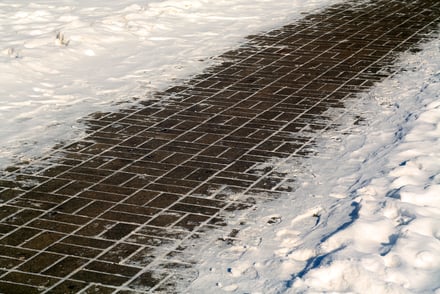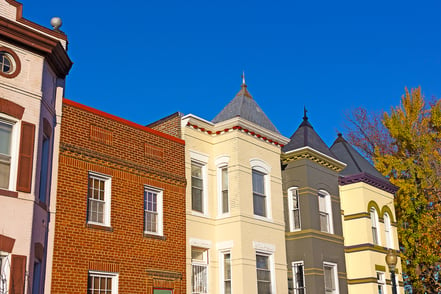Stately old homes are a thing of beauty. Historic neighborhoods, like those in Washington DC, boast many brick homes built in the 18th, 19th, and early 20th centuries. These homes require specialized attention when exterior maintenance is needed, especially when there is water penetration due to failing brick and mortar.
When water intrusion becomes a problem, don’t trust your beautiful home to just any masonry contractor. Modern masonry contractors may be unfamiliar with what is required to repair historic masonry walls and surfaces. Using the wrong materials can seriously damage your historic home. Let’s take a brief look at how water penetration via failing brick and mortar occurs, how you can detect it, and what to do about it.
Water Penetration and Old Brick
Over time, the constant barrage of weather will erode the dated bricks and soft mortar of your historic brick home. As the mortar cracks and wears away, moisture penetration will create even more damage over time. Washington DC winters can be harsh, and the constant moisture, freezing, and expansion cause water trapped behind your bricks to damage your masonry walls.
Some tell-tale signs of water penetration through failing brick and mortar are:
- Cracked or spalling brick
- Cracked or crumbling mortar
- White, chalky substance (called efflorescence) on the surface of your brick
- Bulging brick wall surfaces
These water intrusion signs mean that it is time for a professional evaluation of your brick exterior walls and surfaces. Detecting and addressing exterior trouble before it gets terrible will prevent or limit interior damage from water penetration.
Tuckpointing to Prevent Water Penetration
Repairing historic brick and mortar homes requires a specialized process called tuckpointing, or repointing. Tuckpointing removes damaged mortar from between bricks and replaces it with a more historically compatible mortar. This older style mortar allows moisture to evaporate, preventing this evaporation from happening through the soft bricks, which produces the efflorescence mentioned above.
Replacing the mortar also seals off channels that could allow moisture to cause extensive damage. Exterior tuckpointing should be part of regular maintenance on any masonry wall, especially for historic brick homes. It is advisable to inspect your brick walls each year to look for the above signs. Renaissance Development specializes in tuckpointing older, historic brick homes. Our team can determine if spot tuckpointing a few areas would meet your current needs or if full tuckpointing across the entirety of your walls is required.
A Word About Permitting
You must obtain a permit in many historic neighborhoods and areas before attempting any repairs. Renaissance Development works closely with the DC Department of Consumer and Regulatory Affairs (DCRA) to obtain proper permitting for each job and is well-regarded for their specialized expertise in the unique nature of repairs and restoration necessary for historic brick homes.
If you suspect that your home in Washington DC or the surrounding areas may be suffering from water penetration due to failing brick and mortar, get in touch with Renaissance Development for a professional evaluation and recommendations for repair.
Dec 3, 2020 8:45:00 AM


